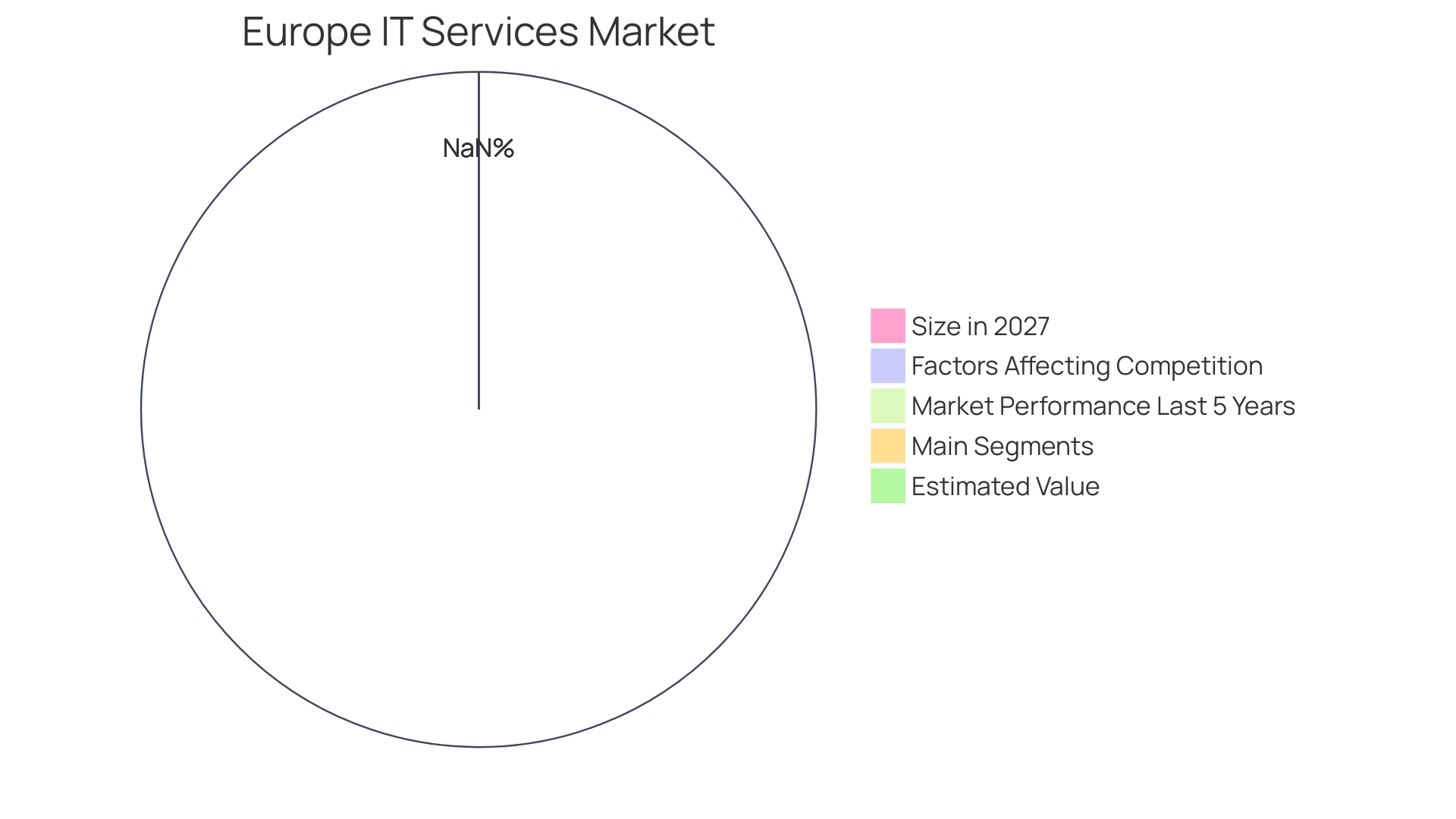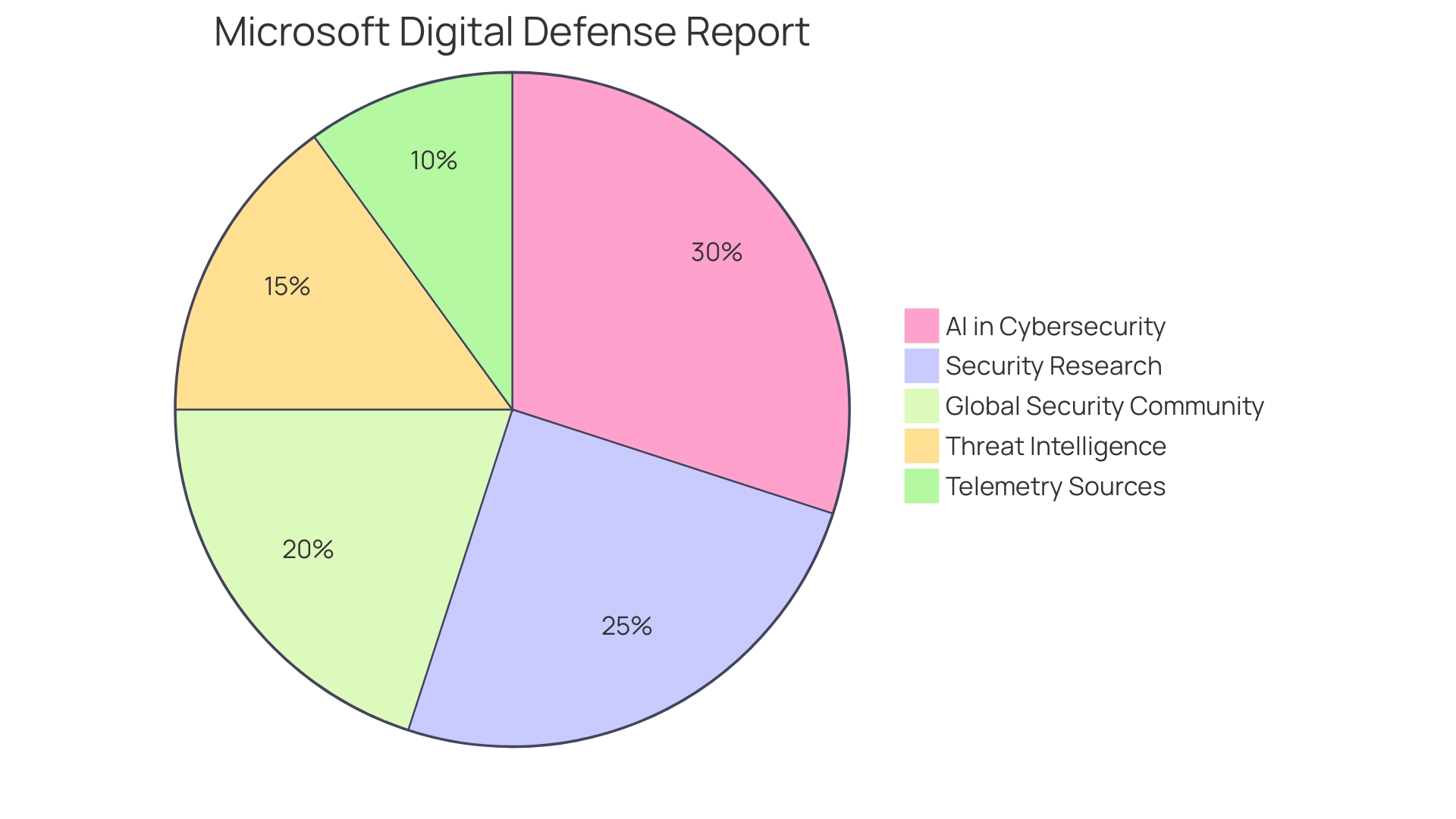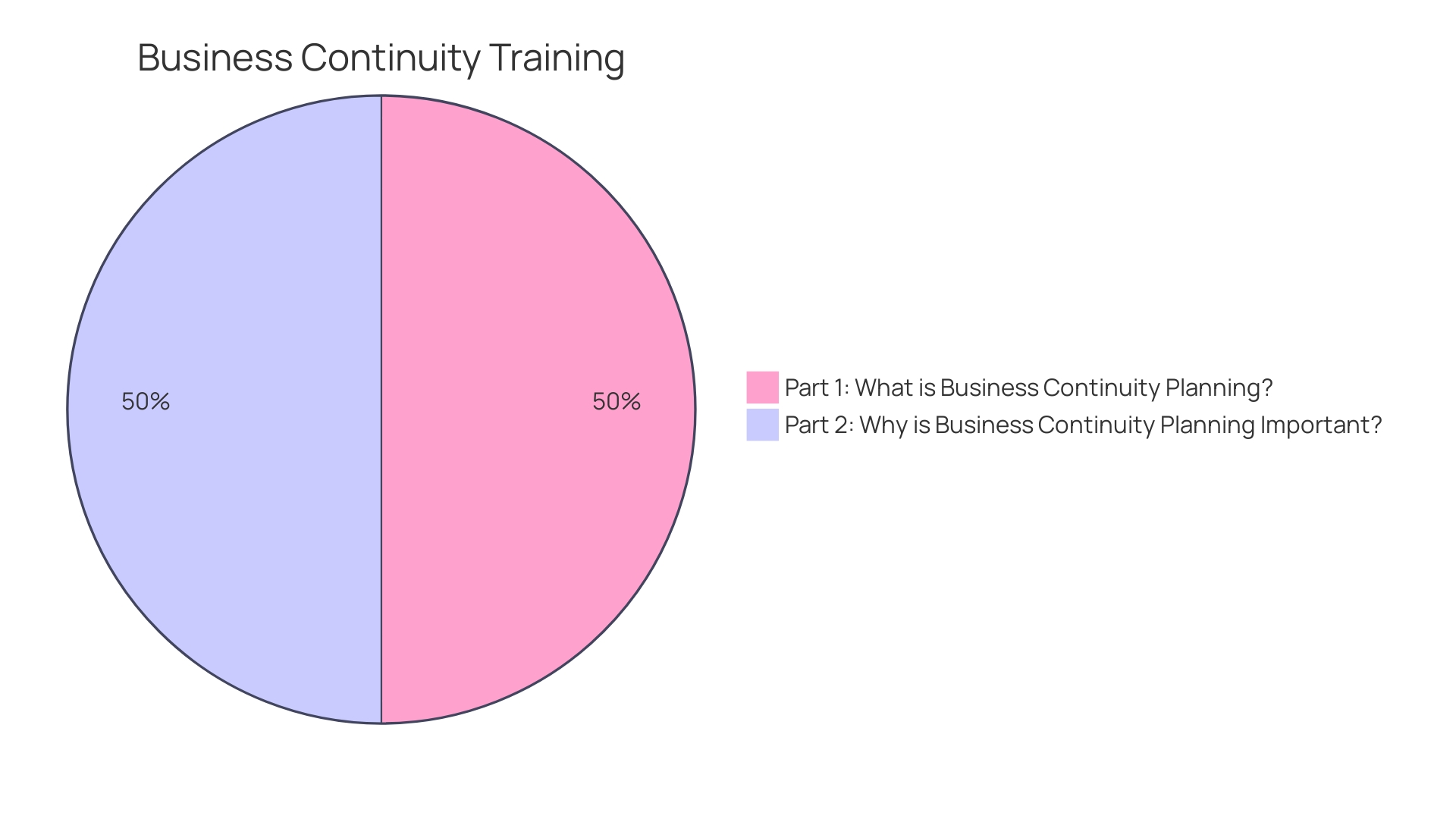Introduction
Comprehensive IT maintenance and support services play a vital role in today's digital landscape, ensuring robust technology performance and operational excellence. From enhancing system functionality to bolstering security and preventing major problems, IT maintenance is a strategic imperative for organizations. In this article, we explore the benefits of prioritizing IT maintenance, the difference between scheduled and reactive maintenance, and the cost efficiency of regular upkeep.
We also delve into best practices for IT asset maintenance and the role of IT depot services in optimizing asset performance. By prioritizing IT maintenance, organizations can foster deep trust in technology, adapt swiftly to advancements, and stay ahead in a competitive market.
Understanding IT Maintenance
Comprehensive IT maintenance and support are the key to strong technology performance, essential for organizations to flourish in today's digital landscape. These offerings include a variety of activities intended to maintain and improve the functionality of IT infrastructure, covering hardware, software, and network systems. The importance of such services is underscored by the high stakes involved in maintaining operational excellence and security, as well as the potential for cost savings through preventative measures.
Case studies like Purdue University's IT overhaul demonstrate the transformative effect of IT upkeep. In spite of its worldwide recognition and advancement in academia, Purdue's internal IT infrastructure once fell behind. By giving priority to IT upkeep, the university attained unparalleled levels of service in network and operational functions, enhancing its operational resilience and dependability.
In the same way, Somerset Academies of Texas encountered difficulties with different software platforms. Under the guidance of Director of Technology Services & Communications, Austin Morgenroth, the district streamlined its processes by integrating various systems into a cohesive framework, demonstrating that effective IT management is not solely about technical upkeep but also about strategic integration and process optimization.
In the quickly changing tech landscape, organizations are realizing the importance of IT support. 'Persistent Systems' introduction of a one-of-a-kind open source support offering, as stated by tech analyst Lynn Greiner, is evidence of the industry's trajectory. This service ensures that open source software remains up-to-date, addressing the growing need for ongoing software support to meet compliance and operational standards.
The growing reliance on technology in business operations is mirrored by the expansion of IT budgets globally, as organizations align their technological capabilities with their strategic goals. With a market value of $5.5 billion in 2022, predictive care is becoming increasingly sought after, demonstrating the industry's shift towards preemptive and data-driven care strategies.
These developments emphasize the crucial role of IT upkeep and support services. By fostering deep trust in technology, organizations can adapt swiftly to technological advancements, satisfying the unique needs of their business and staying ahead in a competitive market. Therefore, thorough IT upkeep is not only a technical requirement; it is a strategic necessity for maintaining performance, security, and innovation in the digital era.
The Difference Between Scheduled and Reactive IT Maintenance
Scheduled IT upkeep is not just a regular process; it is an investment in a company's operational integrity and reliability. By regularly updating software, cleaning hardware, and monitoring performance, businesses safeguard against the sudden disruptions that can arise from IT issues. This methodical approach to IT management aligns with the strategies of innovative institutions like Purdue University, which has not only maintained a reputation for affordability but also achieved recognition for its progressive work in the semiconductors field. With organized upkeep, organizations can aim to achieve comparable levels of network and system operations reliability.
In contrast, reactive IT care is the act of responding to problems after they occur, focusing on immediate fixes to restore functionality. While this is sometimes necessary, it's the equivalent of waiting for a machine to break down before considering maintenance—inefficient and potentially costly. This is exemplified by Specsavers, which operates in the complex field of optometry with a global supply chain and specialized medical devices. The company has had to develop bespoke solutions to integrate older, yet functional, equipment with modern data transfer technologies, highlighting the significance of proactive support in complex IT environments.
The costs associated with unplanned downtime can be staggering, with UK enterprises experiencing significant financial impacts. According to a report by Beaming, companies heavily dependent on e-commerce and cloud services are particularly susceptible, highlighting the significance of strong IT upkeep strategies. Furthermore, a worldwide study conducted by Sapio Research discovered that 92% of plant upkeep decision-makers experienced enhanced uptime as a result of consistent maintenance, with dependability directly impacting company image and financial results.
Finally, the incorporation of AI-based early warning mechanisms, such as the Chartwatch tool at St. Michael's Hospital, suggests the forthcoming of IT upkeep where predictive analytics can proactively notify personnel of potential problems before they escalate. This proactive approach to IT care can reduce the possibility of downtime and guarantee that organizations stay operational 24/7, echoing the idea that in a hyper-connected world, downtime is not only inconvenient—it has a negative impact on a company's achievements and customer confidence.
Preventing Major Problems Through Regular IT Maintenance
Comprehensive IT care and support services are essential for ensuring uninterrupted business operations and enhancing system reliability. A poignant example comes from the federal government's response to President Reagan's death, which inadvertently highlighted the significance of regular IT checks. The government's delayed decision to declare a day of mourning resulted in unattended finance department reports, which could have been catastrophic had there been critical issues needing immediate attention. This highlights the significance of regular upkeep in preventing and resolving possible complications before they escalate into bigger issues.
A testament to the effectiveness of thorough IT care is the Guthrie Clinic's holistic approach, which extends beyond healthcare to include community health initiatives. Likewise, IT structures demand a thorough approach that not just addresses pressing issues but also enhances the overall well-being of the framework. In the healthcare sector, innovative solutions like CHARTwatch from St. Michael's Hospital are revolutionizing patient care by predicting health deterioration, thereby facilitating timely interventions.
Embracing a proactive approach to IT care, as promoted by Open Room Inc., can result in substantial enhancements in software application performance and compliance with current industry standards. This proactive approach is not just about fixing what's broken; it's about strategic planning and optimization to preempt issues. Motivated by the realization that IT infrastructure is crucial for business continuity, IT support companies provide a range of services spanning from system upkeep to strategic IT planning, all focused on preventing downtime and maximizing operations.
The importance of IT upkeep is further exemplified by Douglas Adams' advice, 'Don't Panic!' – indicating that with careful upkeep and backup solutions, most tech issues are recoverable. The Internet's ubiquity serves as another parallel; it is relentless and demands constant vigilance to ensure that services like websites remain available around the clock. The implications of website downtime are severe, reinforcing the need for robust server and hosting arrangements.
Statistics highlight the importance of upkeep in enhancing uptime. According to a global survey by Sapio Research, 92% of individuals responsible for upkeep affirmed that the act of maintenance had bolstered their uptime in the past year, with 38% witnessing an improvement of at least 25%. These figures not only reflect efficacy in upkeep but also its impact on reputation and financial performance. Moreover, the anticipatory upkeep market, assessed at $5.5 billion in 2022, is evidence of the increasing acknowledgment of proactive servicing's significance in guaranteeing equipment dependability and durability.
Essentially, regular and thorough IT upkeep is not just a defensive tactic; it is a fundamental element that improves the resilience and efficiency of any organization's technological framework.

Bolstering Security with Proactive IT Maintenance
In the realm of digital operations, the significance of a robust security posture cannot be overstated. Proactive IT care is a cornerstone in fortifying this stance, ensuring that businesses are well-equipped to confront emerging security threats. Regular updates to software and firmware, coupled with the diligent patching of vulnerabilities, form the bedrock of a sound defensive strategy. The implementation of security best practices is not merely a technical requirement but a strategic move to secure sensitive data, protect against the insidious nature of malware and cyber-attacks, and uphold stringent industry regulations. By prioritizing security in IT upkeep, organizations can greatly decrease the chances of data breaches and the resulting damage to their reputation.
The necessity of such measures is underscored by the escalating costs associated with data breaches. A study by the Ponemon Institute, sponsored by IBM Security, reveals that the average cost of a data breach in 2023 reached a new peak of $4.45 million. This alarming statistic is a clarion call for organizations to reevaluate their security investments and adopt a more proactive stance. Recognizing the importance of safeguarding digital assets, industry leaders across various sectors, from hospitality giants like IHG Hotels & Resorts to major airlines such as United, have adopted advanced security measures. These measures not only enhance data protection but also provide comprehensive insights into network security, ensuring operational continuity and customer trust.
Adopting a product thinking mindset, as advocated by industry experts, shifts the focus from mere maintenance to the strategic development of technology assets. This approach prioritizes long-term growth, innovation, and a deep understanding of user needs, aligning with the evolving demands of customers and the competitive landscape. Furthermore, the inclusion of experience level agreements (XLAs) highlights the overall customer experience, reaching beyond the boundaries of conventional level agreements (SLAs).
Organizations are encouraged to operate an effective IACS cybersecurity management approach, as suggested by guidance 62443-2-5, which entails a comprehensive mapping of structures and assets. This systematic approach is instrumental in assessing and selecting vendors, ensuring that the chosen security solutions are perfectly tailored to the organization's specific requirements.

Enhancing System Performance Through Regular Updates and Optimization
Comprehensive IT maintenance and support services are pivotal for any enterprise aiming to maintain peak operational efficiency and a competitive edge. Regular maintenance of IT infrastructure is not just about performing updates; it's about improving performance through a strategic and proactive approach. The process involves deploying software updates and patches which serve dual purposes: they fortify security by addressing vulnerabilities and bring forth new features that streamline functionality and optimize resource usage. When we consider hardware optimization, we are referring to precise tasks such as thorough cleaning, disk defragmentation, and meticulous settings adjustment. These measures are crucial in guaranteeing operations run at their highest level, thus meeting business needs with accuracy.
When the Ford Foundation recognized the need to overhaul their content management system due to its inability to keep up with their publishing cadence, they took a decisive step towards IT optimization. Their initiative underscores the importance of a responsive IT framework that evolves in tandem with organizational growth. Similarly, Open Room Inc. from Japan overhauled their QA processes, recognizing that software support and the upkeep of their applications are essential for sustaining their effectiveness in the property industry.
In today's digital landscape, the shift from reactive to predictive care represents a transformative trend. The integration of machine learning and AI enables businesses to anticipate and preempt software failures, thereby curbing potential downtime and extending the system's lifespan. This predictive approach is supported by the increase in overall search interest for predictive care, which has tripled since 2017 and continues to gain momentum. Furthermore, a recent survey by Sapio Research revealed that 92% of plant maintenance decision-makers reported increased uptime due to diligent maintenance practices, with 38% witnessing a remarkable improvement of at least a quarter.
For enterprises to flourish, matching technology capabilities with organizational requirements is non-negotiable. Firms that master this alignment see twofold growth in profitability compared to their counterparts. The foundation of high-performance IT lies in fostering deep trust in technology and the IT organization, which, in turn, cultivates customer satisfaction and propels growth. As Sonia Blizzard, Managing Director of Beaming, highlights, the dependence on digital technologies has been critical for continuity and success, but it also emphasizes the requirement for strong connectivity and the efficient management of internet downtime. Companies that invest in holistic IT care and support services not only optimize performance but also position themselves to deliver a seamless user experience, ultimately enhancing productivity and reducing response times.
Cost Efficiency of Regular IT Maintenance
Recognizing that IT upkeep is not just a line-item cost but rather a strategic investment is essential for businesses seeking success in a technology-driven environment. Being proactive in IT care is a cornerstone of operational efficiency, enabling the early detection and resolution of potential issues. This foresight not only prevents small problems from becoming disastrous but also aligns with financial best practices by extending the service life of valuable technology assets.
In an era where digital transformation is accelerating, the significance of IT infrastructure is undeniable. According to the report, an astonishing 92% of businesses recognized enhanced uptime as a result of regular upkeep, with 38% mentioning a significant enhancement. Furthermore, three-quarters of these organizations observed a positive impact on their reputation and bottom line, underscoring the importance of reliability. Investing in upkeep not only preserves the integrity of technology but also contributes to environmental sustainability by reducing energy consumption and operational costs.
Prominent companies, like Penske Transportation Solutions, have adopted automation and artificial intelligence to optimize their operational procedures, showcasing the potential of innovation in this domain. Similarly, refurbished tech vendors like Diamond Byte showcase the economic and ecological benefits of maintaining and repurposing technology.
Taking into account the increasing value of the predictive maintenance market at $5.5 billion, it is evident that enterprises are recognizing the need to shift their perspective on IT upkeep. It's not just about cost; it's about building a foundation of trust with customers, adapting to technological changes, and ultimately, positioning an enterprise for long-term success and customer satisfaction.

Best Practices for IT Asset Maintenance
For businesses to uphold efficient IT operations, it's crucial to incorporate best practices into their upkeep routines. A well-organized upkeep timetable is essential, involving routine inspections, updates, and system optimizations tailored to the unique demands of the organization's technology infrastructure. Moreover, meticulous documentation and tracking of maintenance procedures are essential for a comprehensive overview, allowing for the swift identification and resolution of persistent challenges.
Growing the skill set of IT personnel is another cornerstone, equipping them with the latest knowledge and proficiency to effectively manage and maintain technological solutions. To enhance these endeavors, establishing collaborations with experienced IT providers can be extremely valuable. Companies like Rackspace Technology have demonstrated their expertise by offering strategic insights and alternative solutions during the RFP process, as seen in the case of IFCO. Their focus on customer-centric approaches and breadth of experience with cloud services have proven beneficial to firms with limited IT resources.
Adopting a product thinking mindset, as advocated in the Software Engineer Book of Knowledge (SWEBOK), shifts the focus from mere stability to long-term value creation and innovation. This approach, driven by a nuanced understanding of user needs and a dedication to problem-solving, is critical in responding to the evolving demands of customers and the competitive market landscape. Experience Level Agreements (XLAs) go a step further than traditional Service Level Agreements (SLAs), capturing the essence of customer experience and satisfaction.
The significance of IT upkeep is additionally supported by research, demonstrating that 92% of enterprises have observed a rise in uptime because of thorough upkeep practices, and 60% are intending to enhance their investment in dependability and upkeep within the next three years. A strong strategy for upkeep not only improves uptime but also adds to a business's reputation, financial performance, and its ability to fulfill contractual commitments while minimizing waste and fostering repeat business.

The Role of IT Depot Services in Optimizing IT Asset Performance
Maintaining operational efficiency is crucial for optimizing the performance of IT assets through depot operations. These offerings include careful repair, refurbishment, and regular maintenance within a controlled environment. By leveraging the proficiency of depot providers, companies gain advantages from accurate hardware diagnostics, timely parts replacement, software updates, and comprehensive cleaning. This meticulous care is instrumental in prolonging the life of IT assets, enhancing their performance, and minimizing operational disruptions. The strategic use of depot facilities allows firms to fully leverage the potential of their IT investments, contributing to the overall technological resilience and longevity of their infrastructure.
For instance, organizations like IFCO, through its partnership with Rackspace, leveraged external expertise to manage its IT assets more effectively, addressing their unique operational challenges. Similarly, companies like Delivery Hero addressed significant workflow inefficiencies by streamlining their IT delivery, demonstrating the transformative power of effectively managed IT solutions. Moreover, institutions like UHealth have shown how tailored IT asset management solutions can bridge operational domains, ensuring seamless functioning across complex organizational structures.
In today's rapidly evolving technology landscape, the ability to adapt and trust in one's IT capabilities is paramount. Businesses that align their technology strategies with their operational needs not only foster trust but also achieve greater customer satisfaction and growth. Depot offerings play a crucial role in this alignment, providing companies with the tools and assistance required to navigate the ever-changing demands of the digital era. To demonstrate the importance of such offerings, organizations like Pacific Healthcare Group have upheld strong on-premises infrastructure and chosen strategic initiatives instead of transitioning to the cloud, showcasing a customized approach to managing IT assets that is in line with business goals and budgetary considerations.
The Benefits of Prioritizing IT Maintenance
Ensuring optimal performance, security, and operational efficiency is the key to comprehensive IT support, which goes beyond ensuring the upkeep and service of the systems. Regular upkeep is a preemptive measure against potential disruptions and system failures, which can be costly both in terms of time and financial resources. It's a vital aspect of running a successful enterprise, as exemplified by Guthrie Clinic's community-focused healthcare services and Purdue University's remarkable service levels in network operations despite their aging IT infrastructure.
Economic challenges have prompted many companies to reconsider their technology investment strategies, extending IT refresh cycles to save money. However, this can limit an organization's ability to adopt new technologies that enhance productivity and efficiency. As the predictive market, valued at $5.5 billion in 2022, continues to grow, it becomes evident that the proactive approach to IT management is becoming a business standard for organizations aiming for longevity and excellence in customer satisfaction.
A study by Sapio Research highlights the tangible benefits of careful upkeep practices. An overwhelming 92% of plant maintenance decision-makers reported increased uptime, with 38% observing an improvement of at least 25%. Furthermore, reliability not only influences business reputation and financial performance but also fulfills contractual obligations, mitigates waste, and fosters repeat business.
Adopting a product thinking mindset shifts the focus from merely maintaining current functionality to seeking ways to innovate and add value. This approach, centered around understanding user needs and relentless innovation, ensures that technology assets serve the evolving demands of customers and the market. Incorporating experience level agreements (XLAs) can further enhance this strategy by measuring the impact on customer experience, marking a transition from traditional service level metrics to a more holistic assessment of service quality and user satisfaction.
In today's digital landscape, prioritizing IT maintenance and support is not merely a technical necessity; it's a strategic move that aligns with the core principles of high-performance IT organizations. These principles include deep trust in technology, high adaptability to rapidly changing technology capabilities, and a commitment to delivering unparalleled value to customers.
Conclusion
In conclusion, prioritizing comprehensive IT maintenance and support services is a strategic imperative for organizations in today's digital landscape. By investing in regular maintenance, organizations can adapt swiftly to advancements, satisfy unique business needs, and stay competitive.
Scheduled maintenance safeguards against disruptions and the costs of unplanned downtime. It prevents major problems and enhances system reliability and resilience. Proactive maintenance strengthens security, protects sensitive data, and ensures compliance with industry regulations.
Regular updates and optimization improve system performance, align technology capabilities with business needs, and enhance user experience. By integrating best practices into maintenance routines and leveraging IT depot services, organizations can optimize IT asset performance and minimize operational disruptions.
Understanding that IT maintenance is a strategic investment is crucial. It extends the service life of technology assets, prevents small problems from becoming disastrous, and contributes to environmental sustainability. By prioritizing IT maintenance, organizations can position themselves for long-term success, deliver unparalleled value to customers, and stay ahead in a competitive market.
In conclusion, comprehensive IT maintenance and support services are essential for operational excellence, security, and innovation in the digital age. By investing in regular maintenance, organizations can foster deep trust in technology, adapt swiftly to advancements, and maintain a competitive edge. Prioritizing IT maintenance is not just a technical necessity; it is a strategic move that ensures peak performance, customer satisfaction, and long-term success.




